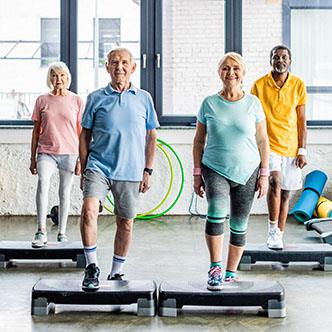
Group exercise programming helps patients recover in the months and years after stroke, based on a recent study that explored the benefits of cardiac rehab in stroke survivors. The study was published in the Journal of the American Heart Association and supports community programs to keep stroke survivors active.
Using data from nineteen studies, this analysis looked at the benefits of group exercise in stroke survivors. The goal was to see whether cardiac rehab programs, which are generally reserved for heart attack and heart failure patients, could benefit stroke patients too.
Stroke is a leading cause of death and disability in the United States. Since stroke survivors face increased risk for heart events and other diseases, a healthy lifestyle can help improve outcomes. However, evidence suggests that stroke survivors take less than half the daily steps and spend more than three-quarters of their time sedentary than healthy adults. This sedentary behavior can contribute to poorer outcomes, such as survival and quality of life.
The recent analysis included 485 stroke survivors with mean ages between 54 and 71 years old. Through each study, participants engaged in group exercise 2–3 times a week for anywhere from 30–90 minutes a session. While the programs differed by study, they lasted anywhere from two to five months and included walking, biking, stepping, or a combination of the three.
After measuring participants’ fitness levels at the start and end of each study, researchers found that exercise programs improved participants’ aerobic capacity by 38%. Fitness was measured by a walking test, walking speed and peak oxygen consumption, all of which help assess aerobic fitness. Researchers found that these benefits existed regardless of participants’ mobility, exercise type and time since stroke, suggesting that nearly anyone can stand to benefit from regular activity.
Authors note that none of the studies had a control group to use as a comparison. However, findings suggest that group exercise programs could help stroke survivors improve their fitness. Over time, it’s possible that ongoing exercise programs could help improve stroke survivors’ health and quality of life.
Currently, most stroke patients receive rehabilitation care immediately after their heart event. This programming tends to focus on recovery of function, rather than fitness, and fails to provide ongoing support in the months and years after recovery.
As a result, authors highlight the need for ongoing programming to help keep stroke survivors active and promote better health. Experts also encourage future trials to assess the long-term impact of exercise programming in stroke patients.